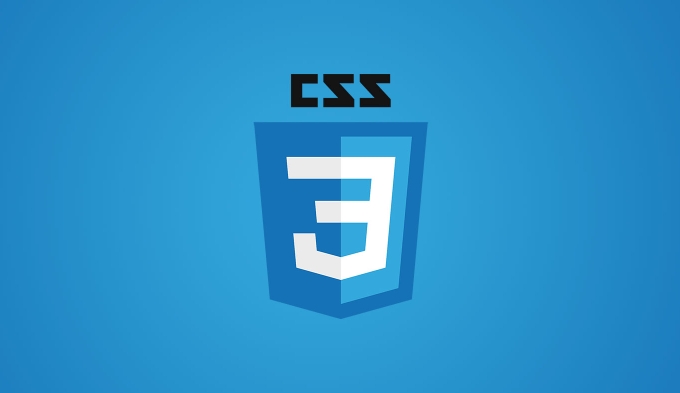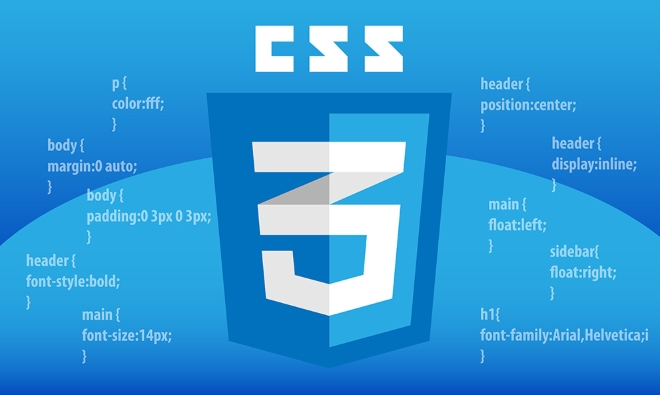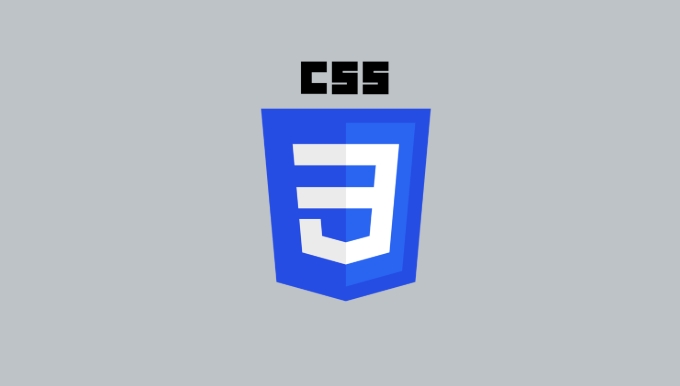Implementing object-fit property for images and videos in css
Jul 07, 2025 am 01:14 AMThe object-fit property prevents deformation by controlling the scaling behavior of images and videos in the container. Its core values ??include contain (keep the proportions to the container), cover (cover and crop the excess), fill (stretch fill the container), none (keep the original size), and scale-down (take none and contain smaller ones). For images, use object-fit:cover; to ensure that images of different sizes are displayed consistently in a fixed layout; for videos, this property also applies, such as filling the container without stretching when used in video chat UI or background video. In terms of browser support, modern browsers support it, but IE11 is not compatible and requires polyfill or alternative solutions. Other tips include adjusting positions with object-position, ensuring that elements have defined dimensions and testing responsive performance.

When you're working with images and videos in CSS, especially when they need to fit inside containers of specific dimensions, the object-fit property becomes super useful. It gives you control over how those media elements scale and behave within their space.

Here's how to use it effectively for both images and videos.

How object-fit works for images
The object-fit property tells the browser how an image should adjust itself to fit its container. By default, images just stretch to fill their space — which can distort them if the aspect ratio doesn't match.
You can change that behavior by setting one of these values:

-
contain: Scales the image to fit entirely inside the container, keeping the aspect ratio. There may be empty space around the image. -
cover: Scales the image to cover the entire container, cropping parts if needed. Great for full-width banners or background-style images. -
fill: Stretches the image to fill the container without maintaining the aspect ratio (can look squashed). -
none: Image stays at original size, regardless of container size. -
scale-down: Similar tocontain, but uses the smaller ofnoneorcontain.
For example, using object-fit: cover; on a fixed-size card layout ensures all images look consistent, even if they're different sizes originally.
Applying object-fit to videos
Just like images, videos often need to fit into containers without looking weird. The object-fit property works exactly the same way on <video></video> elements as it does on <img alt="Implementing object-fit property for images and videos in css" > .
Let's say you have a video chat UI where each user's video feed is in a square box. Using object-fit: cover; makes sure each video fills the box without stretching or leaving black bars on the sides.
Another common case is hero sections with background videos. You'll usually go with object-fit: cover; and set the video width and height to 100% so it covers the whole area.
Don't forget:
- Always apply
object-fitdirectly to the video element. - If the video has audio or controls, make sure those are still accessible after styling.
Browser support and fallbacks
Good news: object-fit is supported in all modern browsers, including Chrome, Firefox, Safari, and Edge. However, if you need to support older versions of Internet Explorer (like IE11), you'll run into issues because it doesn't support this property at all.
If you must support IE:
- Use JavaScript polyfills like
object-fit-images - Or fall back to using background images or other layout tricks
But for most current projects, especially those targeting modern users, you can safely use object-fit without worrying too much.
A few small but important tips
One thing people often miss is that object-position works alongside object-fit . This lets you control where the image or video sits inside the container — say, aligning it to the top or right side instead of center.
Also, remember that object-fit only works if the element has a defined size. So always set width and height on your image or video tag, or make sure it's constrained by its parent container.
And finally, test how your layout behaves on different screen sizes. Sometimes what looks good on desktop breaks weirdly on mobile, especially with cover or contain .
Basically that's it.
The above is the detailed content of Implementing object-fit property for images and videos in css. For more information, please follow other related articles on the PHP Chinese website!

Hot AI Tools

Undress AI Tool
Undress images for free

Undresser.AI Undress
AI-powered app for creating realistic nude photos

AI Clothes Remover
Online AI tool for removing clothes from photos.

Clothoff.io
AI clothes remover

Video Face Swap
Swap faces in any video effortlessly with our completely free AI face swap tool!

Hot Article

Hot Tools

Notepad++7.3.1
Easy-to-use and free code editor

SublimeText3 Chinese version
Chinese version, very easy to use

Zend Studio 13.0.1
Powerful PHP integrated development environment

Dreamweaver CS6
Visual web development tools

SublimeText3 Mac version
God-level code editing software (SublimeText3)

Hot Topics
 How can I include CSS only on some pages?
Jun 11, 2025 am 12:01 AM
How can I include CSS only on some pages?
Jun 11, 2025 am 12:01 AM
There are three ways to selectively include CSS on a specific page: 1. Inline CSS, suitable for pages that are not frequently accessed or require unique styles; 2. Load external CSS files using JavaScript conditions, suitable for situations where flexibility is required; 3. Containment on the server side, suitable for scenarios using server-side languages. This approach can optimize website performance and maintainability, but requires balance of modularity and performance.
 Flexbox vs Grid: Understanding the Key Differences in CSS Layout
Jun 10, 2025 am 12:03 AM
Flexbox vs Grid: Understanding the Key Differences in CSS Layout
Jun 10, 2025 am 12:03 AM
Flexboxisidealforone-dimensionallayouts,whileGridsuitstwo-dimensional,complexlayouts.UseFlexboxforaligningitemsinasingleaxisandGridforprecisecontroloverrowsandcolumnsinintricatedesigns.
 Creating an Auto-Closing Notification With an HTML Popover
Jun 10, 2025 am 09:45 AM
Creating an Auto-Closing Notification With an HTML Popover
Jun 10, 2025 am 09:45 AM
The HTML popover attribute transforms elements into top-layer elements that can be opened and closed with a button or JavaScript. Popovers can be dismissed a number of ways, but there is no option to auto-close them. Preethi has a technique you can u
 What is 'render-blocking CSS'?
Jun 24, 2025 am 12:42 AM
What is 'render-blocking CSS'?
Jun 24, 2025 am 12:42 AM
CSS blocks page rendering because browsers view inline and external CSS as key resources by default, especially with imported stylesheets, header large amounts of inline CSS, and unoptimized media query styles. 1. Extract critical CSS and embed it into HTML; 2. Delay loading non-critical CSS through JavaScript; 3. Use media attributes to optimize loading such as print styles; 4. Compress and merge CSS to reduce requests. It is recommended to use tools to extract key CSS, combine rel="preload" asynchronous loading, and use media delayed loading reasonably to avoid excessive splitting and complex script control.
 How to use Lotties in Figma
Jun 14, 2025 am 10:17 AM
How to use Lotties in Figma
Jun 14, 2025 am 10:17 AM
In the following tutorial, I will show you how to create Lottie animations in Figma. We'll use two colorful designs to exmplify how you can animate in Figma, and then I'll show you how to go from Figma to Lottie animations. All you need is a free Fig
 Breaking Boundaries: Building a Tangram Puzzle With (S)CSS
Jun 13, 2025 am 11:33 AM
Breaking Boundaries: Building a Tangram Puzzle With (S)CSS
Jun 13, 2025 am 11:33 AM
We put it to the test and it turns out Sass can replace JavaScript, at least when it comes to low-level logic and puzzle behavior. With nothing but maps, mixins, functions, and a whole lot of math, we managed to bring our Tangram puzzle to life, no J
 External vs. Internal CSS: What's the Best Approach?
Jun 20, 2025 am 12:45 AM
External vs. Internal CSS: What's the Best Approach?
Jun 20, 2025 am 12:45 AM
ThebestapproachforCSSdependsontheproject'sspecificneeds.Forlargerprojects,externalCSSisbetterduetomaintainabilityandreusability;forsmallerprojectsorsingle-pageapplications,internalCSSmightbemoresuitable.It'scrucialtobalanceprojectsize,performanceneed
 Does my CSS must be on lower case?
Jun 19, 2025 am 12:29 AM
Does my CSS must be on lower case?
Jun 19, 2025 am 12:29 AM
No,CSSdoesnothavetobeinlowercase.However,usinglowercaseisrecommendedfor:1)Consistencyandreadability,2)Avoidingerrorsinrelatedtechnologies,3)Potentialperformancebenefits,and4)Improvedcollaborationwithinteams.






